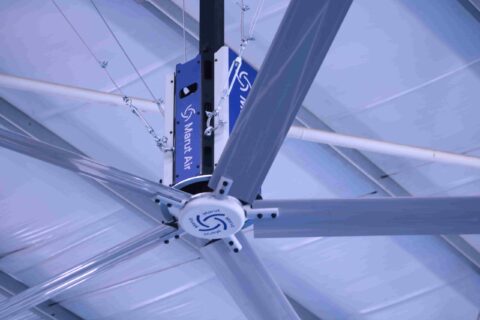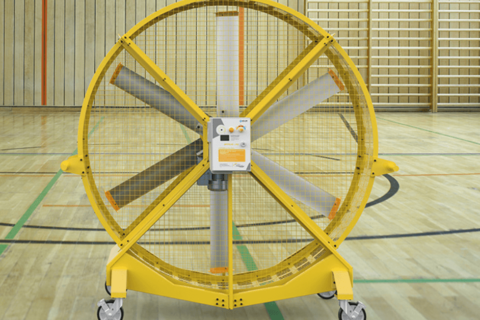High temperatures cause a number of issues for industry workers. As we approach the hottest months of the year, plant managers must have a strategy in place to reduce heat on their production floors. Understanding how to cool a manufacturing plant is essential for maintaining worker safety and productivity.
The Importance of Heat Reduction in a Factory
High temperatures in workplaces can increase health concerns as well as cause equipment problems, both of which can impair production and potentially endanger factory workers.
Heat Effects Health
Working on a manufacturing floor exposes you to a number of hazards due to the heat. Excessive heat or spending time in poorly ventilated spaces might impair the body’s capacity to maintain a healthy temperature. This causes heat cramps, heat exhaustion, and heat stroke, all of which can be fatal. For these reasons, adequate manufacturing cooling systems must be implemented.
To stay safe while working in extreme temperatures, personnel must take frequent breaks, stay hydrated, and eat healthy. If you work in multiple locations with varying temperatures, you may need to dress in layers to ensure that you are always wearing comfortable attire.
Heat Effects Equipment
Heat can harm the health of your staff as well as your equipment. Electronic equipment can run for 32 years at 45°C and four years at 80°C, according to the Arrhenius Equation. The need to repair equipment more frequently increases operational costs and harms a company’s bottom line. At 45 degrees Celsius, electronic devices can run for 32 years.
Heat can reduce output by causing equipment to run inefficiently or to fail completely. When equipment fails due to heat, the problem might be difficult to detect because the damage is generally inside, and damaged components may appear to function normally at first inspection. The damage is frequently not discovered until rigorous testing is conducted. This results in even more downtime and productivity loss.
You can also read: How to Keep Your Factory Cool with HVLS Fans?
Heat Delays Meeting Production Objectives
When factories are under pressure to fulfill output targets, they must ramp up their activities. This can result in both equipment and workers working longer hours than usual.
Temperatures may rise as a result of all of this extra activity. When machines work harder, they generate more heat, which contributes to rising manufacturing floor temperatures. If machines are not allowed to cool down, they may emit significantly more heat, work inefficiently, or even fail.
How Can You Avoid Factory Heat?
Moving air around on the factory floor can be enough to keep the facility cool in some cases. Fans that sit on the floor, are fixed on the walls, or are located elsewhere inside the facility transfer air from one location to another, creating a cooling effect. While conventional fans will not truly cool the air, the wind they produce will provide some respite to workers. If the primary purpose is employee comfort, fans may suffice.
Larger than ordinary fans, high-volume, low-speed (HVLS) fans can break up blocks of hot air and provide an even greater cooling impact. Some industrial HVLS fans are also integrated with smart technology that allows them to arrange when to run and collaborate with other cooling equipment. Managing factory temperature efficiently is crucial for maintaining a comfortable work environment. Consider employing fans to lower factory floor temperatures if temperatures are not excessively high or if your primary purpose is to provide relief to workers.
Conclusion
While manual methods may be sufficient to manage heat in some cases, more complex cooling equipment, such as HVLS fans, may be required in others, such as when manufacturers cannot open windows and doors to allow outside air into the facility. Dust, insects, and other contaminants can enter the outside air and wreak havoc on equipment and operations.
Marut Air understands how critical it is to keep all of your machinery in top working order. If you liked this resource and want to learn more about our HVLS fans and other ventilation product lines, please contact us right away.



